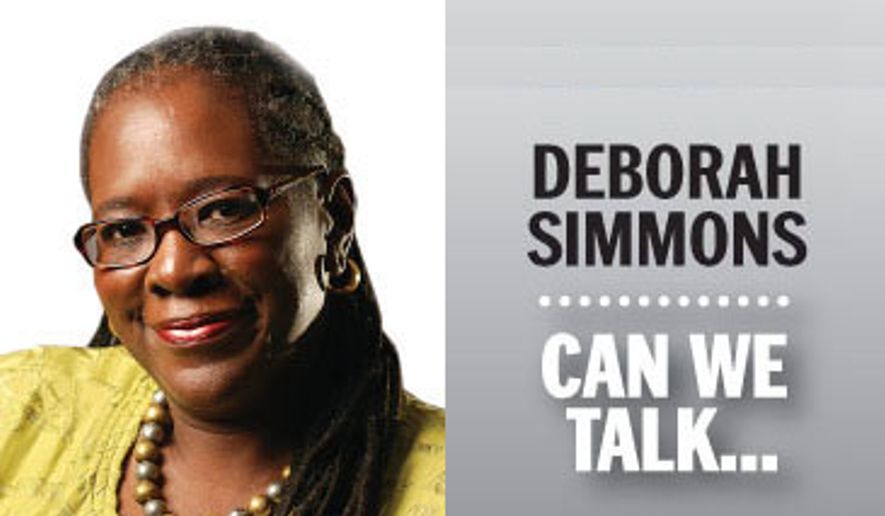ANALYSIS/OPINION:
There is a candidate running for a high office in the nation’s capital who wants a “moratorium on school closings and new charter schools.” I won’t name the candidate because the focus should not be on the candidate, but on the fact that such a stance is anti-children.
What’s more, the unnamed candidate isn’t the only one the D.C. ballot for Nov. 4 who hasn’t startled with propositions to raise the achievement level for D.C. children.
Yet, here we are, a little more than week until Election Day and the school board races and candidates aren’t burnished on our radar screens.
For shame.
2015 will mark a historic moment in the nation’s capital, as it will be the 20th anniversary of the year that Congress and the Clinton White House approved the D.C. School Reform Act, which established public charter schools and granted authorization for the new public schools to the city’s elected Board of Education. The law was auspicious, pushing D.C. children into innovation classrooms that focused on teaching and learning instead of bureaucracy and union-controlled red tape.
With four school board seats on the Nov. 4 ballot and one member elected over the summer, the stakes are high. Now is the time for voters and other stakeholders to ensure that members of the incoming State Board of Education are focused on teaching and learning.
Ward 5 candidate Mark Jones, who also is a school board president, is neither anti-children nor anti-charter schools.
Stephanie Lilley is another such candidate. A parent of three school-age kids, Ms. Lilley is a former charter school board member who is running in Ward 3 — home of some of the most highly rated schools in the city. She knows what it takes to turn a school around, she knows what a great school looks like, she knows what a failing school looks like and she told me “the parent-teacher-student connection is vitally important to academic achievement.”
And, critical to finding ways to push more kids up the ladder, Ms. Lilley is a reformer.
She almost blew me away when she said, “I’m trying to get [the old] Fillmore in Georgetown school reopened.” I say almost because the feat is not impossible, but because the very political shenanigans that forced the city to allow charter schools remains at play with Fillmore.
See, the D.C. government sold Fillmore in 1998, just as education reform and charter school interest began taking root. Indeed, D.C. leaders were so ambivalent to school reform that city officials tried to stifle growth by refusing to sell or share buildings and facilities with charters, which were forced to use churches and office space as classrooms, and develop tight-lined financial plans to open and sustain fiscal integrity. Traditional schools had no such accountability standards.
Flash forward. In 2007, the mayor was given control of public schooling and the D.C. Council got control of the purse strings. The chairs and the deck changed, but teaching and learning practically remain the same.
Sure magnet schools, charter schools and schools with considerable parental involvement pushed forward. For example, at Stanton Elementary, a D.C. Scholars Public Charter School in the heart of Southeast, where test scores are dramatically rising, and where home visits, committed faculty and enrichment programs are the norm.
Still, as academically successful as some charters are, the children who attend them still get the shaft.
“The sad reality is that the D.C. government has been underfunding charter schools for years, and now parents of charter school students are suing to force the D.C. government to provide these students the funding they are supposedly guaranteed by law,” as Nina Rees, president and CEO of the National Alliance for Public Charter Schools, recently said in our Commentary pages.
Moreover, charter schools have to fight tooth and nail for facilities. Again, the Fillmore school is illustrative. The city sold the building to the Corcoran art Gallery, which in turn got into a court fight with the news owners, George Washington University, which in turn want sell to Fillmore to the highest bidder. (Can you see dreamy condos popping up on 35th Street?)
All the while, however, Ms. Lilley and charter school reformers — with a financial proposal on the table — want to turn Fillmore back into a neighborhood school.
Mayor Vincent C. Gray, who is a lame duck, could intervene at his alma mater. But I doubt it.
So it’s up to voters. It’s up to voters to elect leaders who will fight on behalf of children who, through no fault of their own get stuck with the short stick.
The ballot isn’t overrun with those types of candidates, and if more of the same old-same old end up the victors, I’m afraid we’ll end up with a moratorium on education.
Come to think of it, that’s precisely where we were until Congress and Bill Clinton intervened in 1995.
• Deborah Simmons can be reached at dsimmons @washingtontimes.com.
• Deborah Simmons can be reached at dsimmons@washingtontimes.com.




Please read our comment policy before commenting.